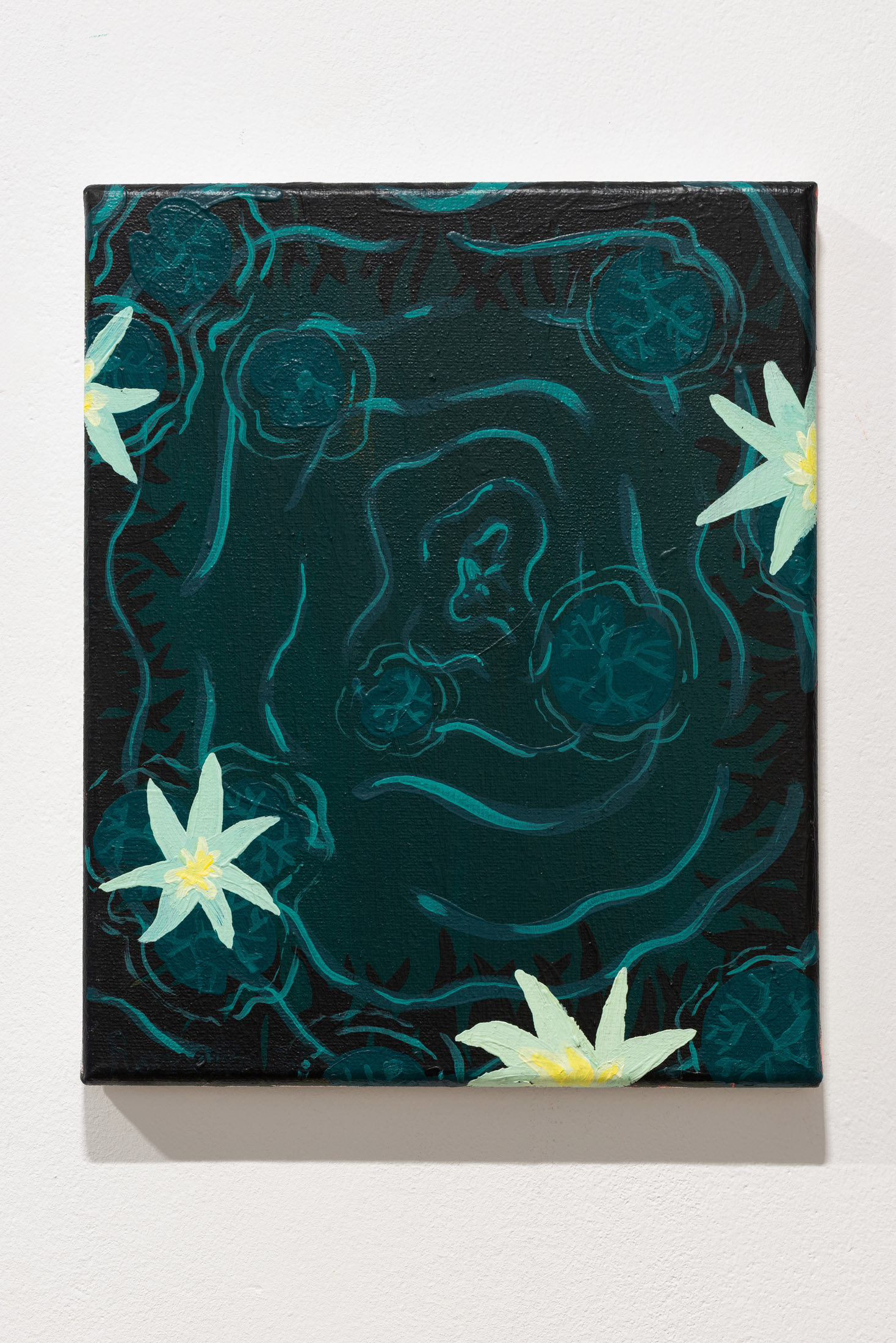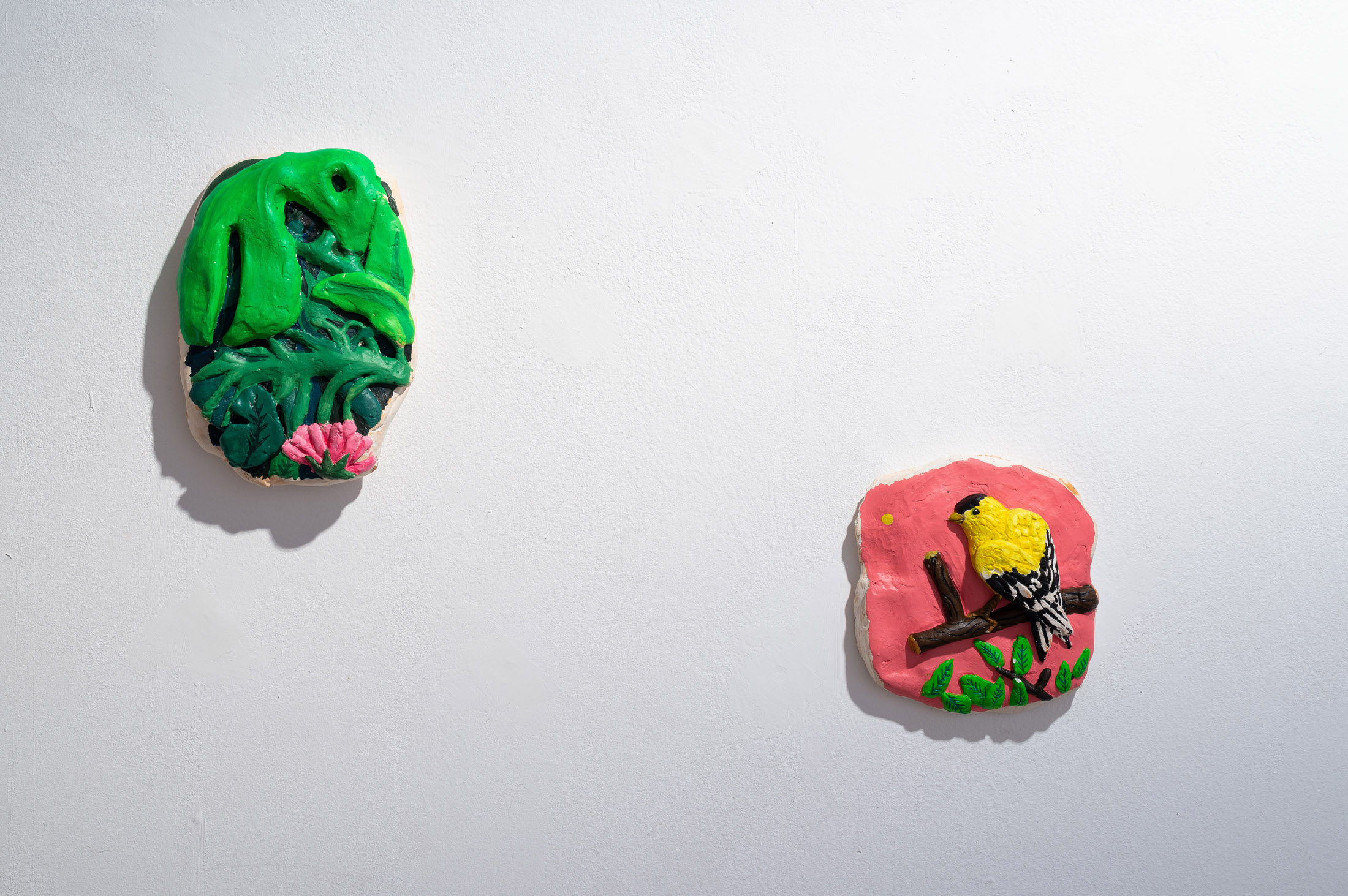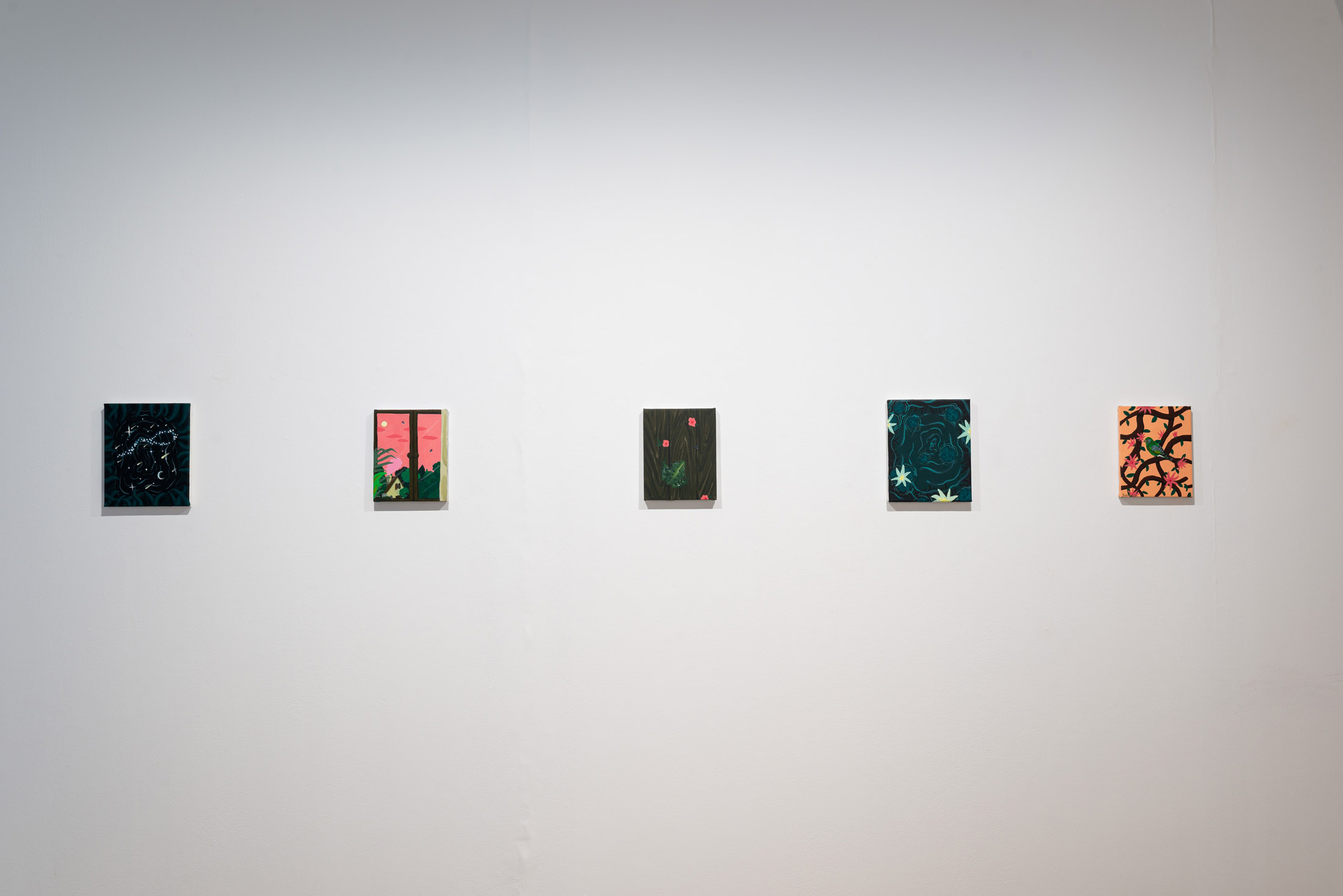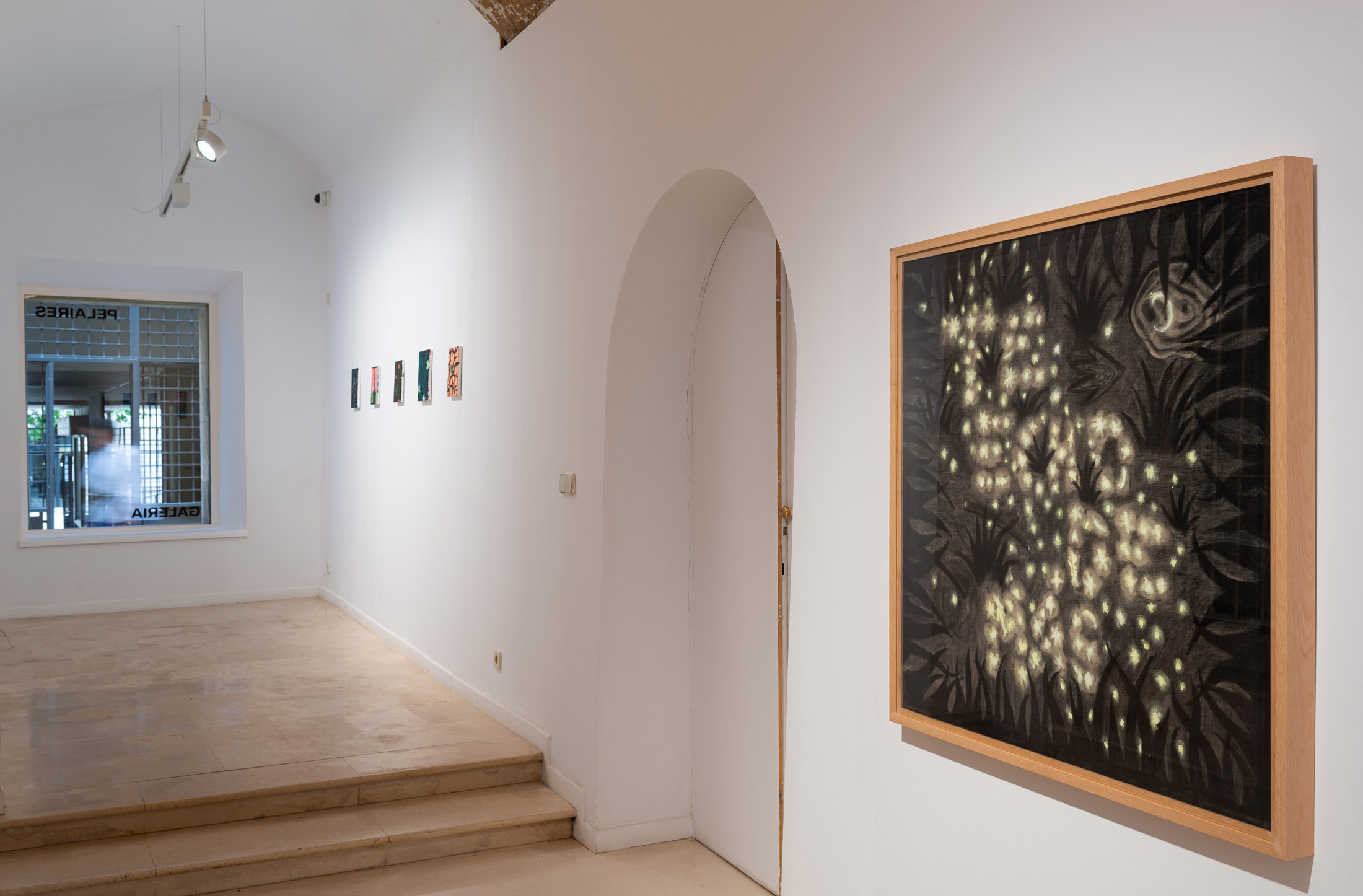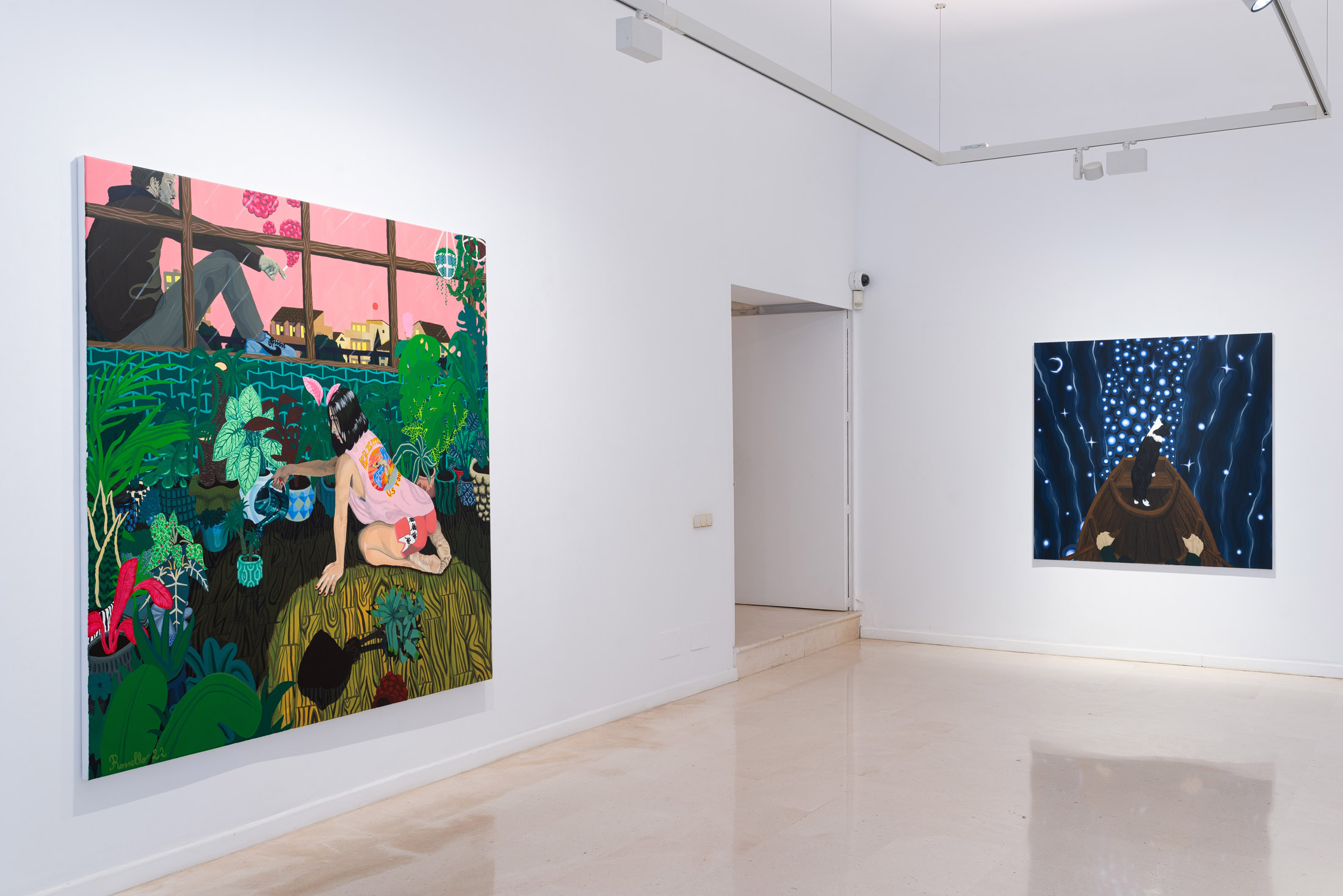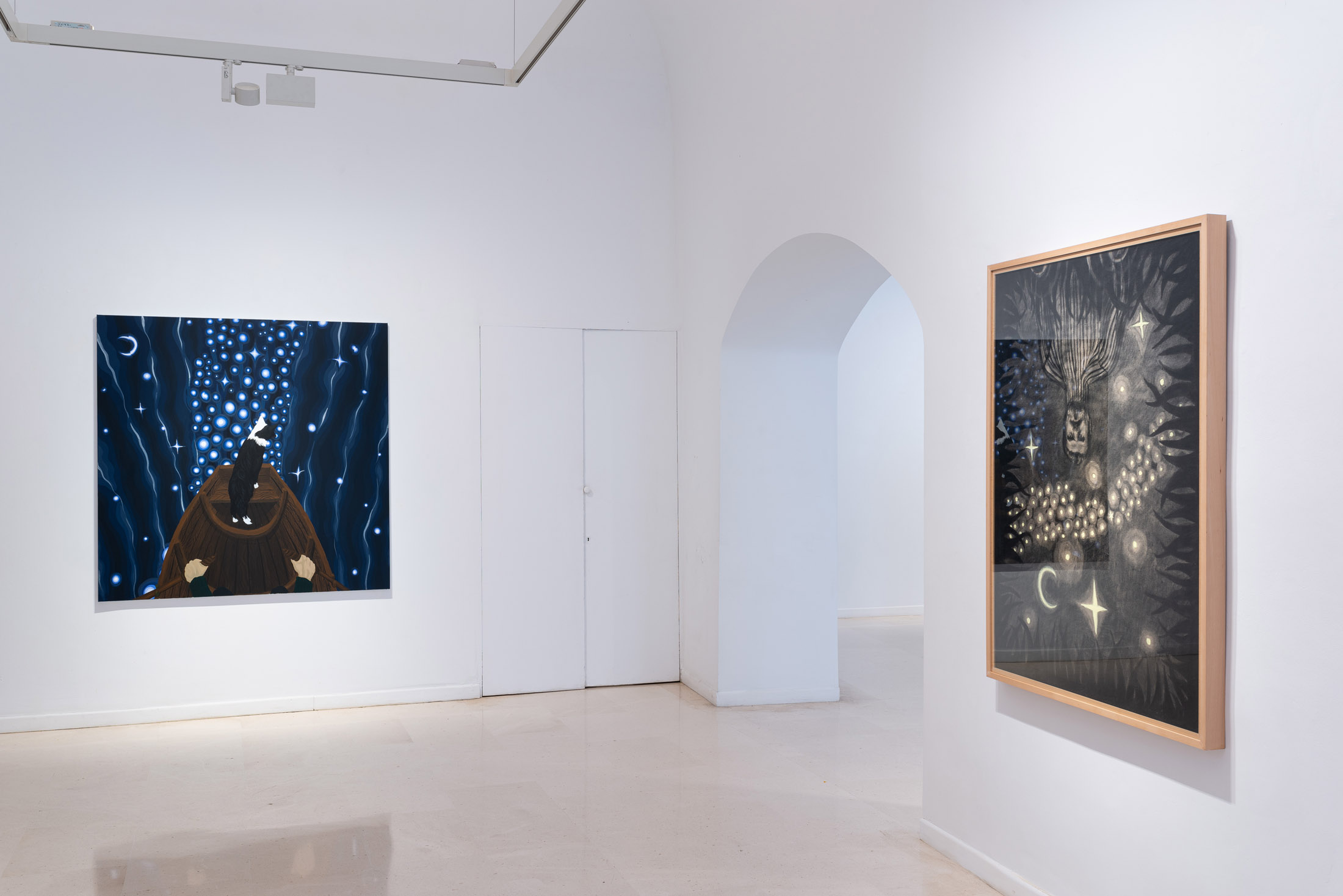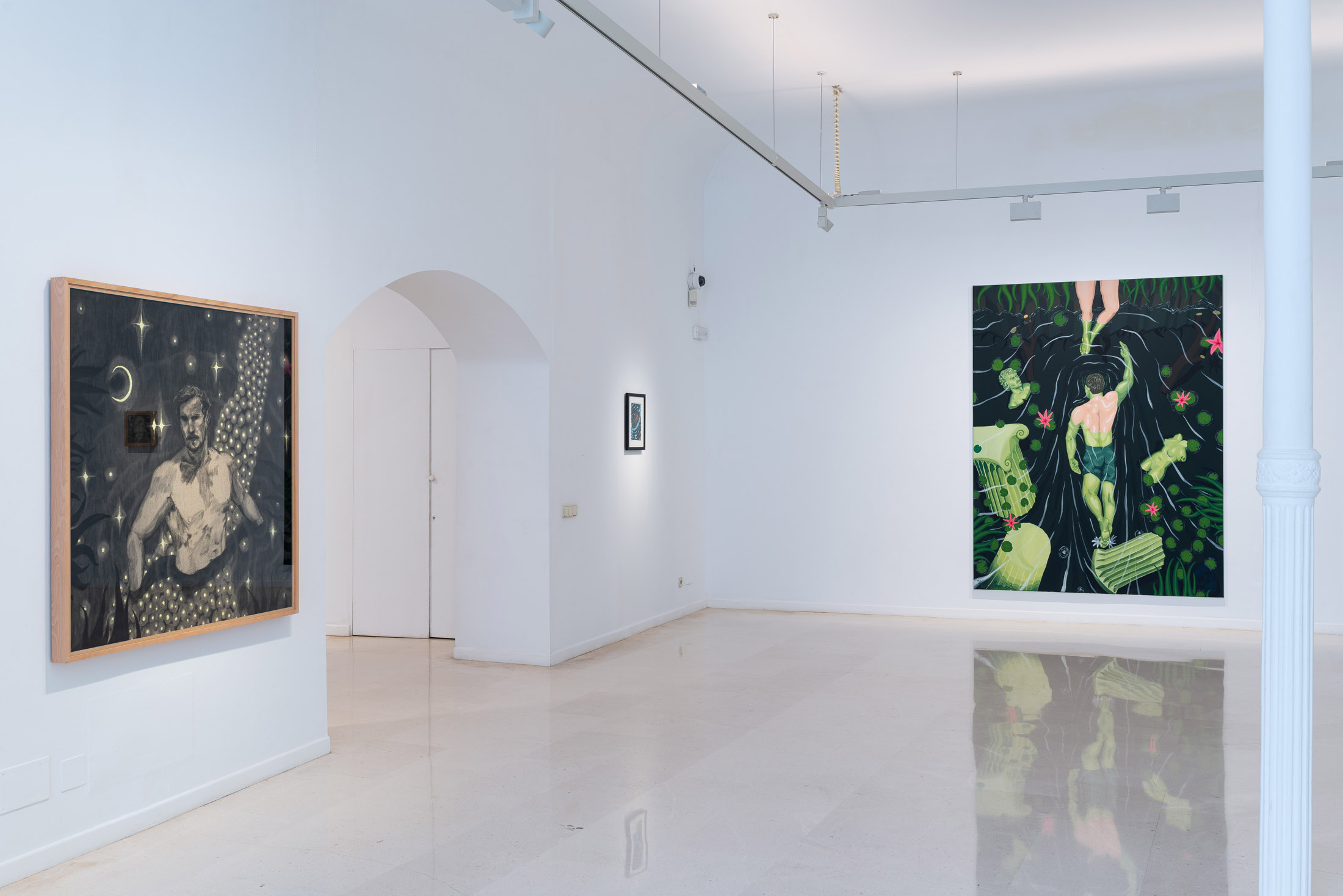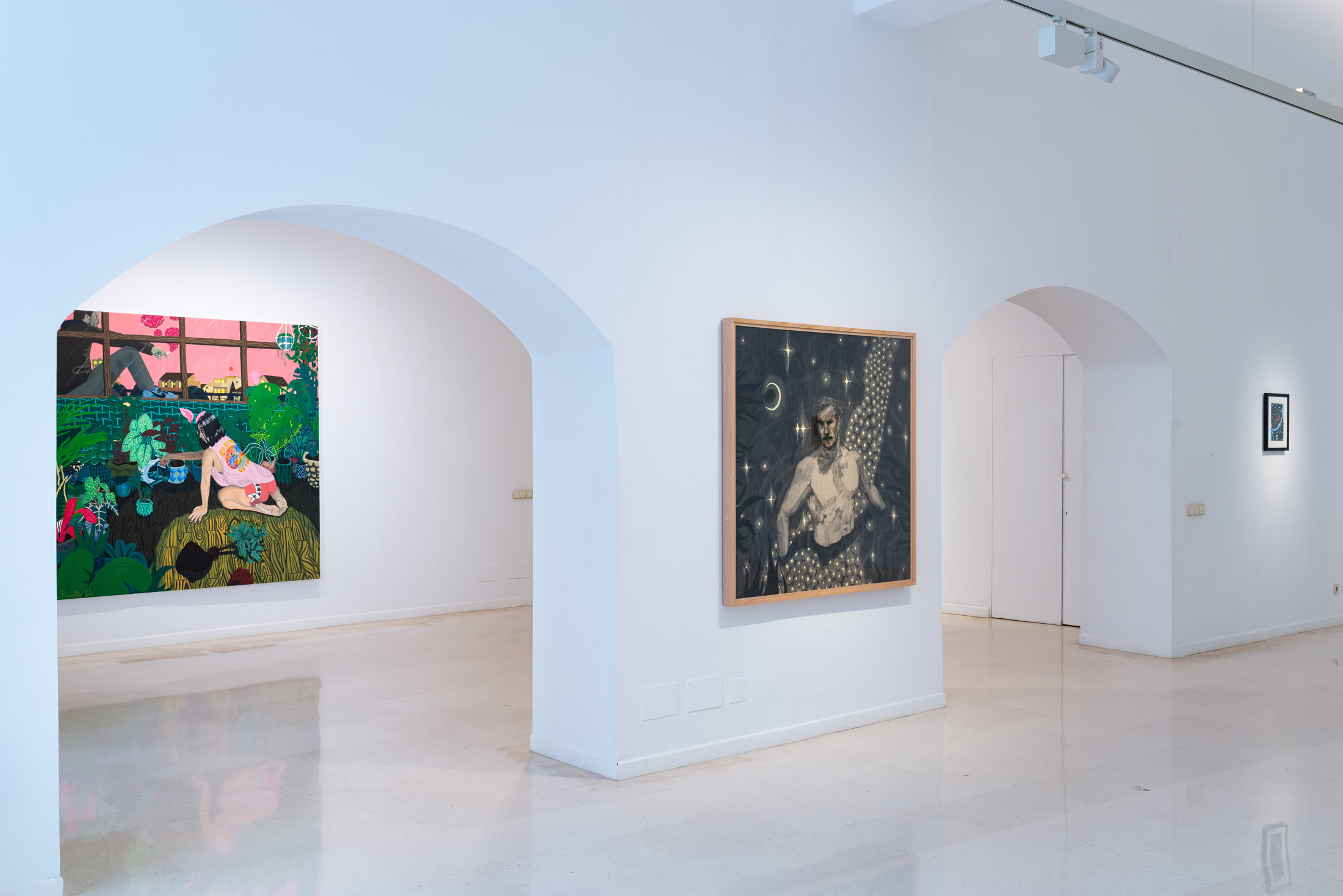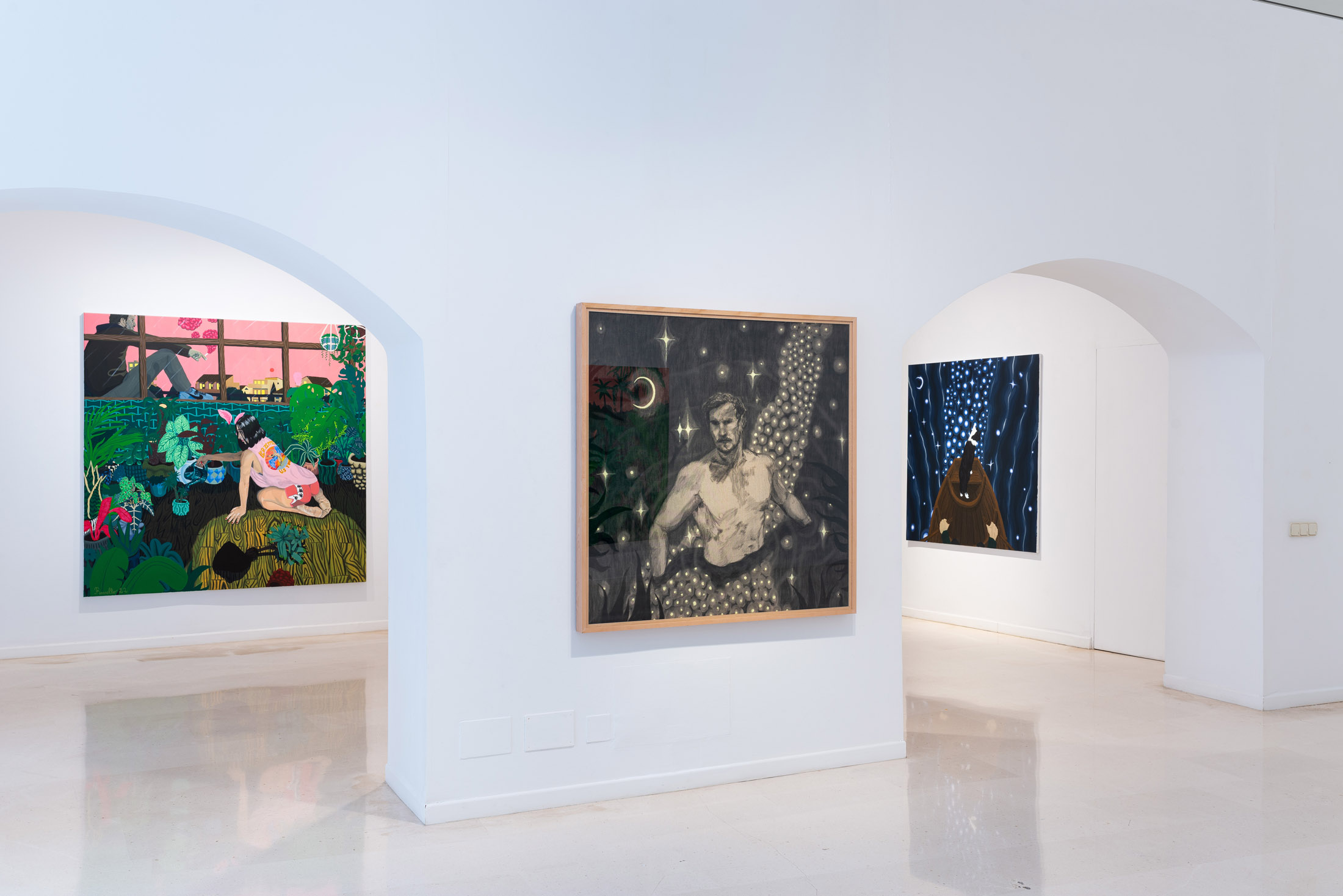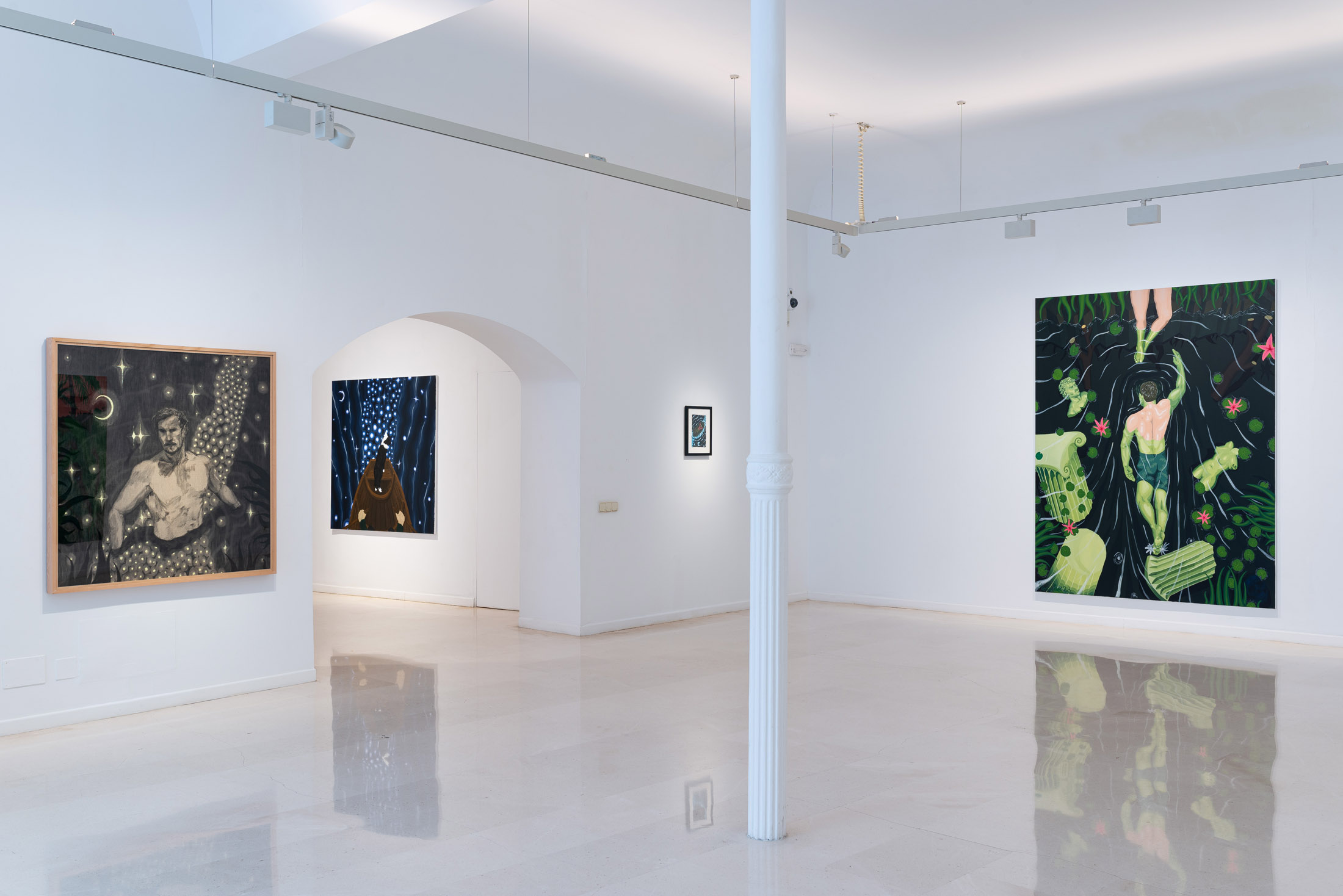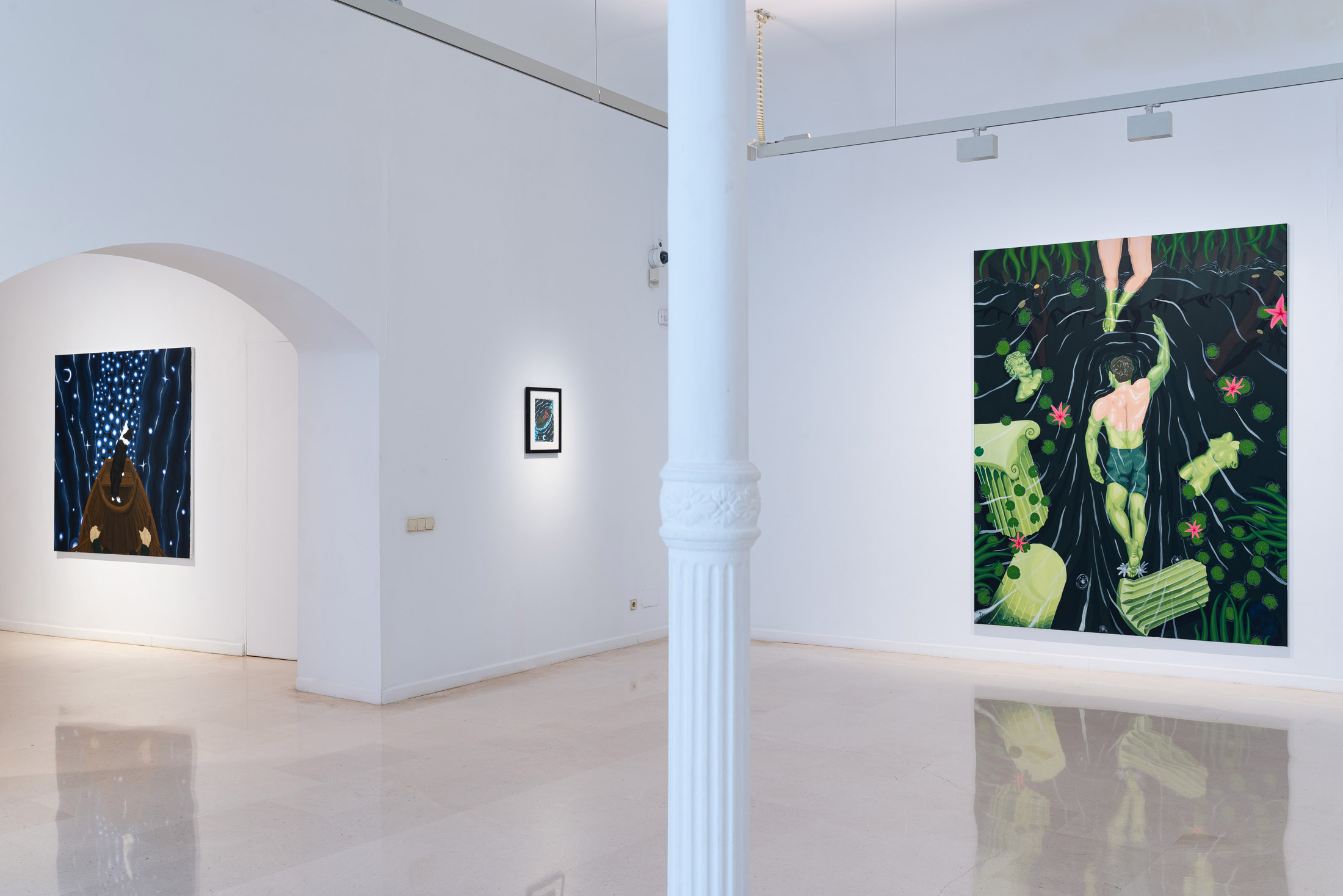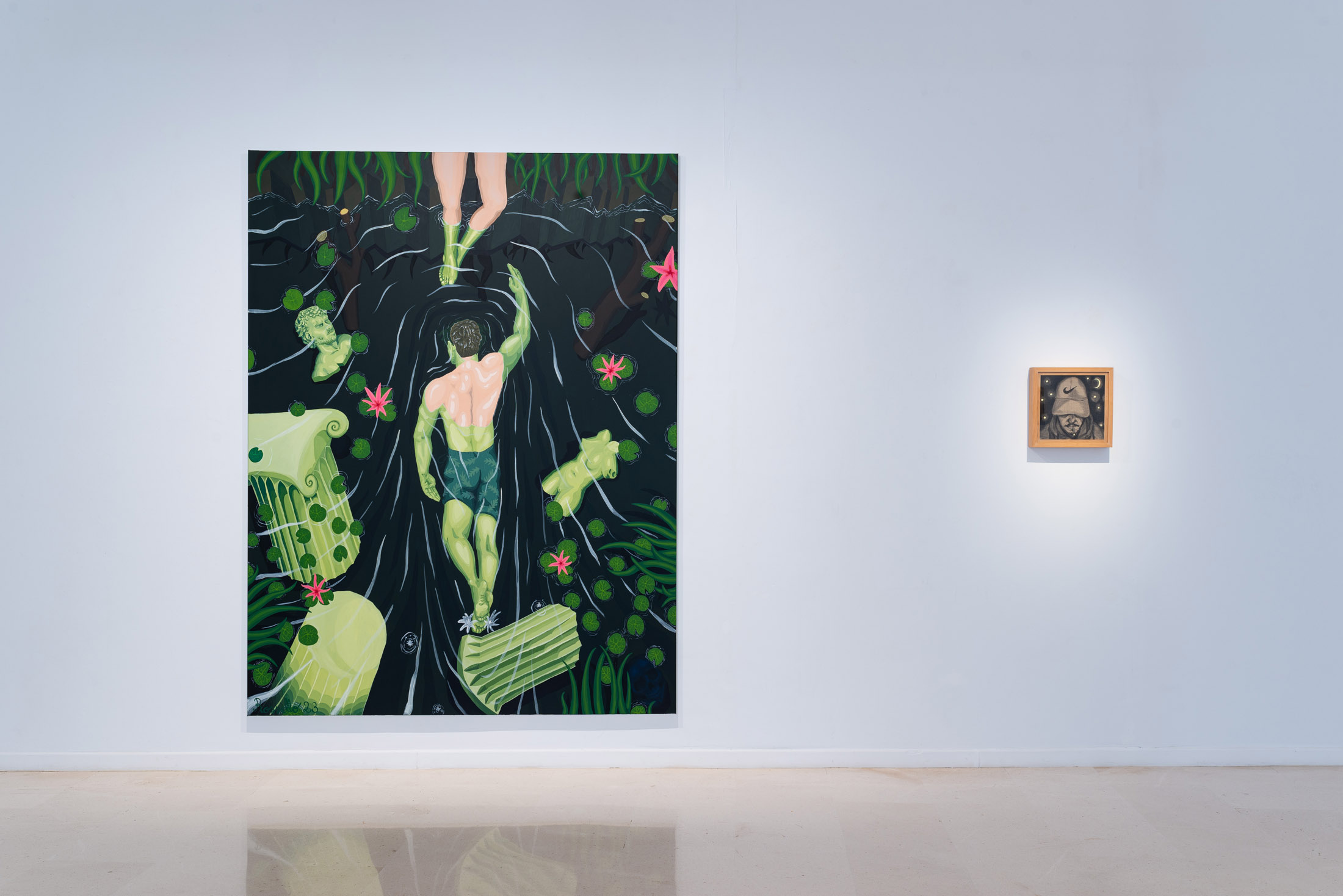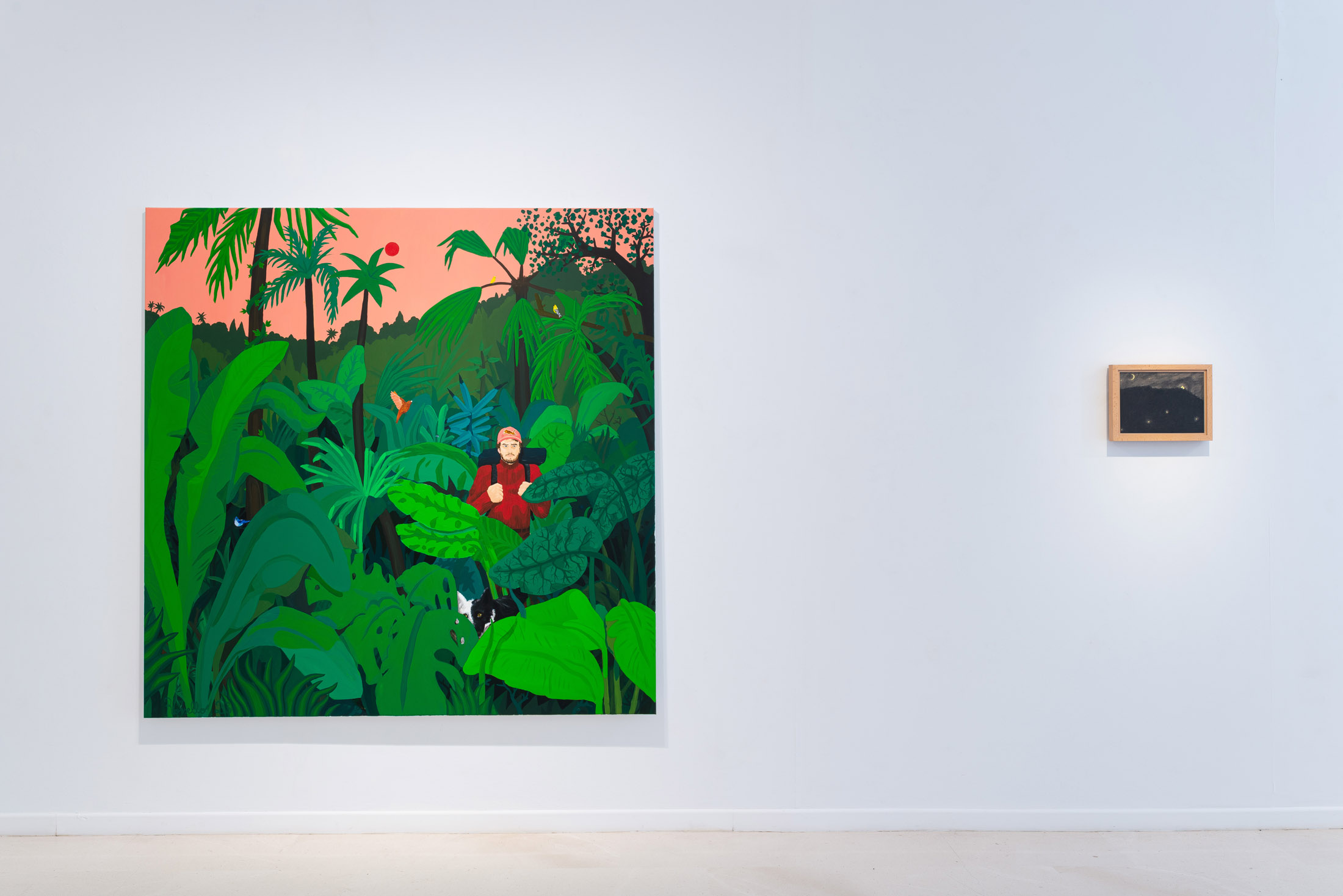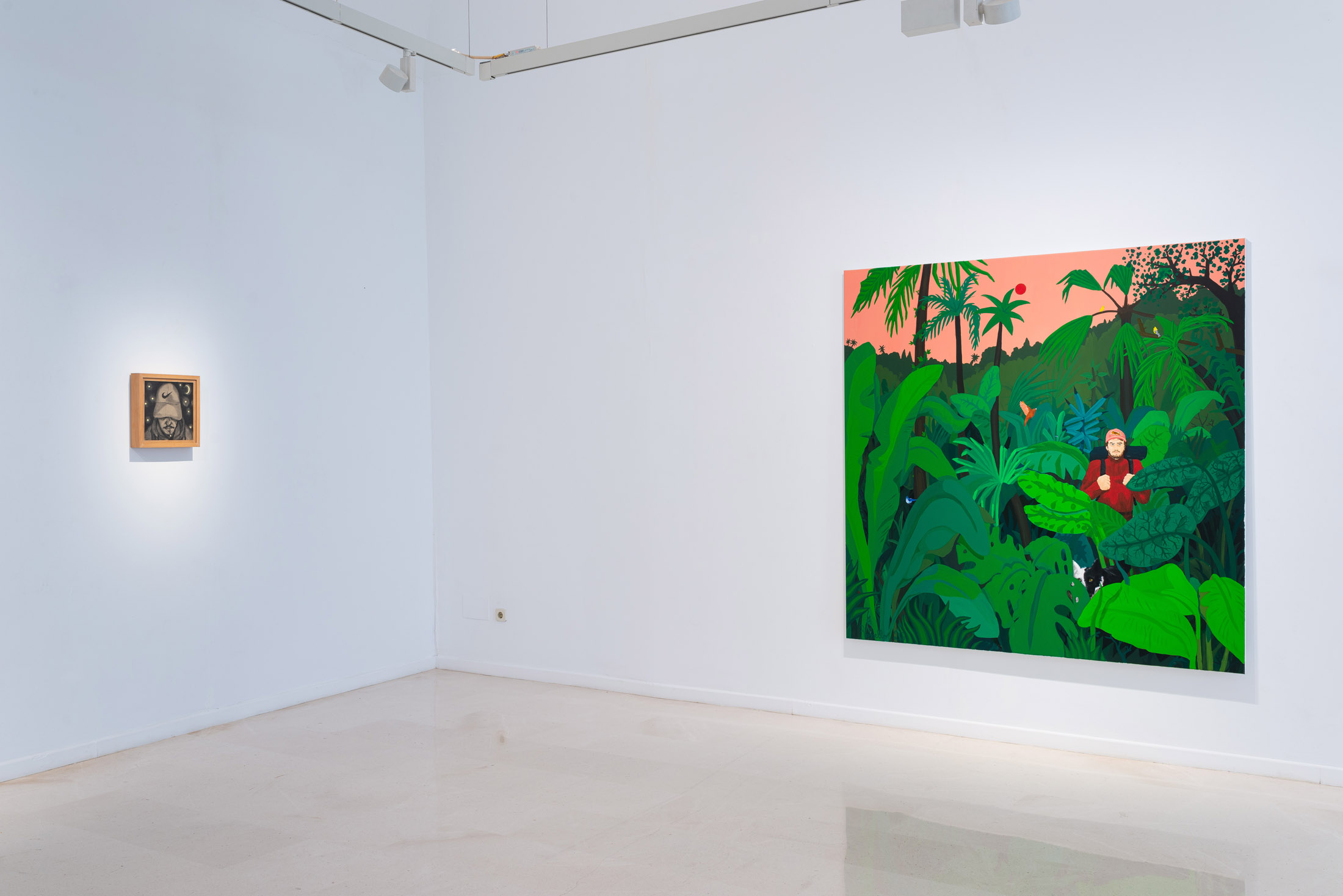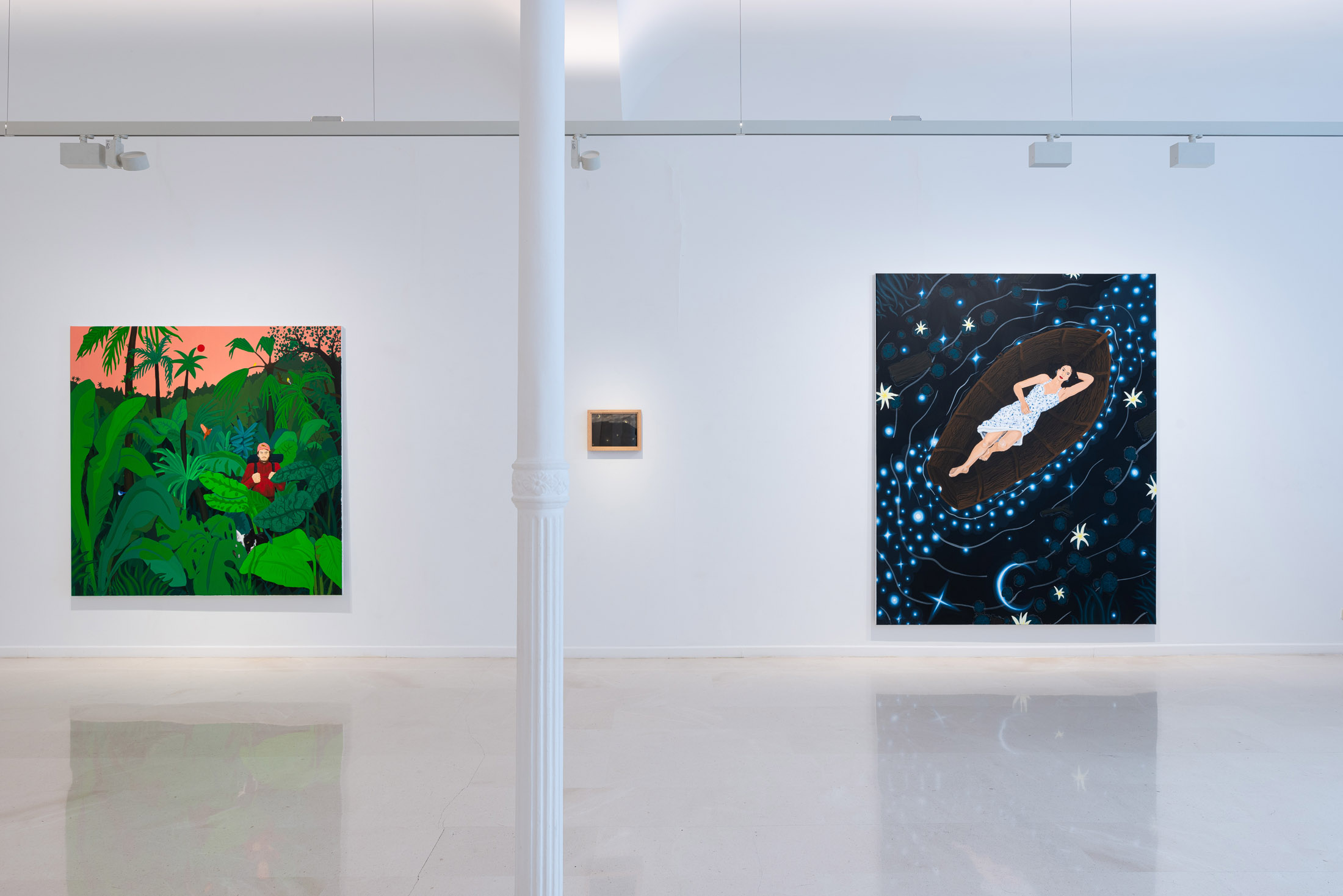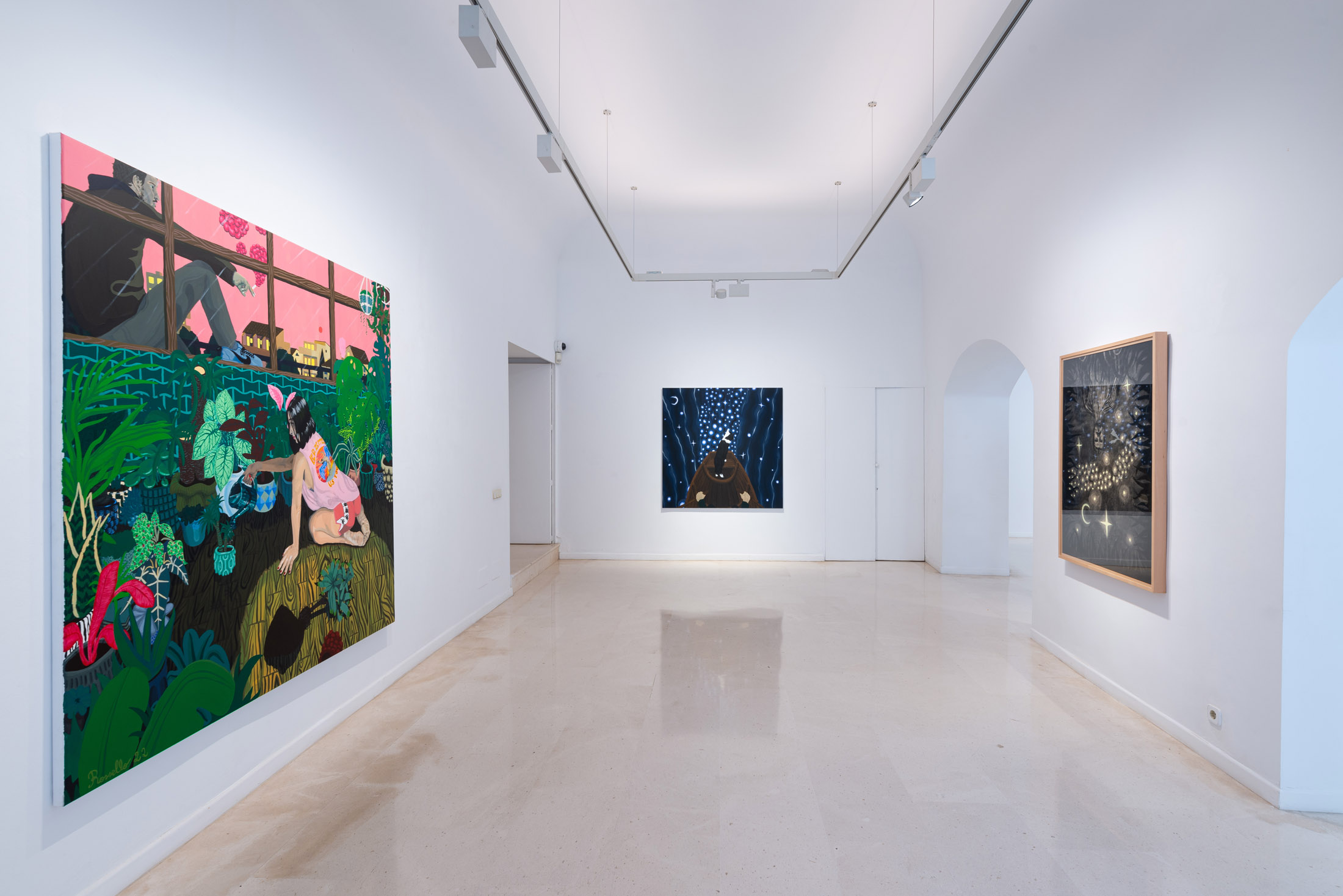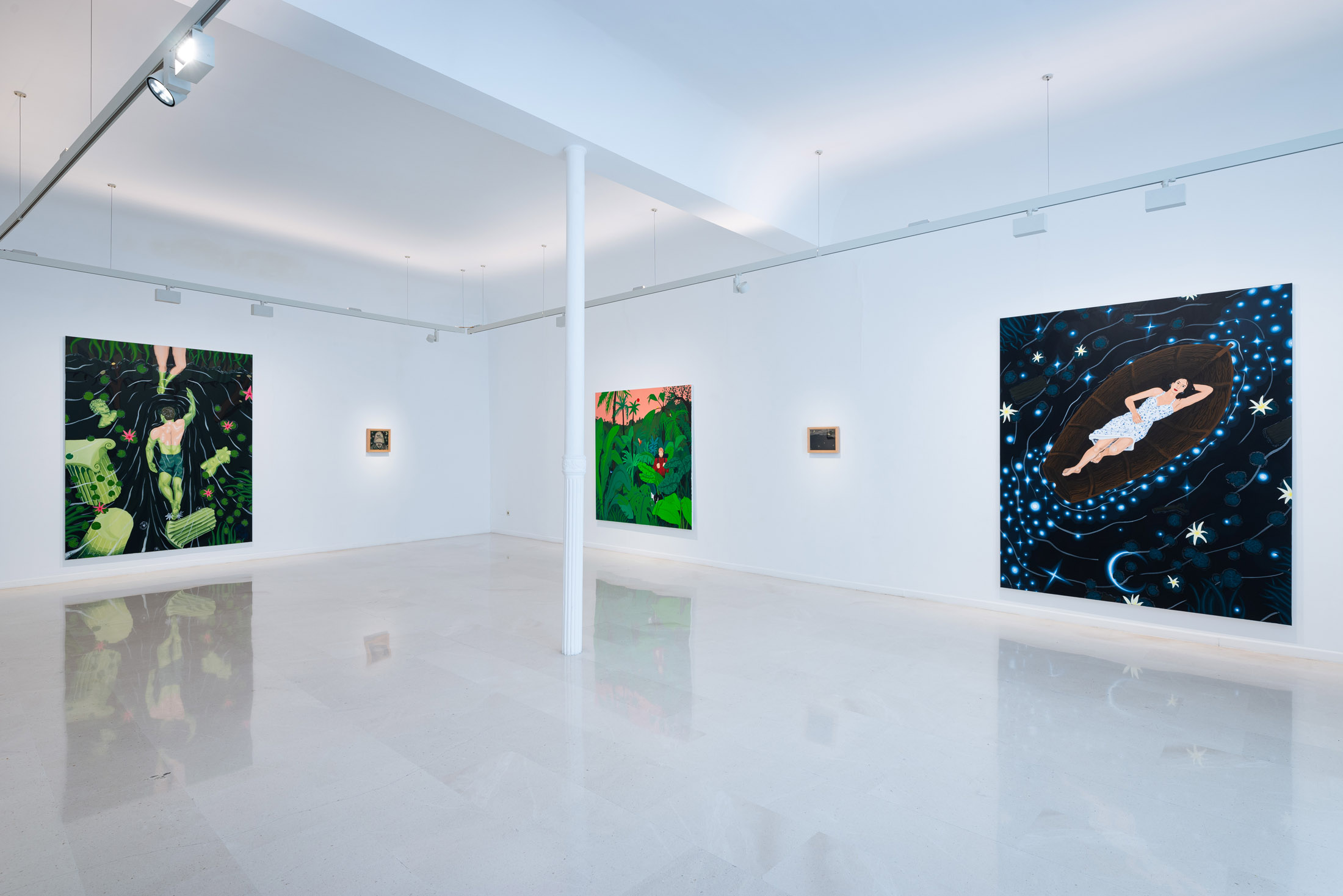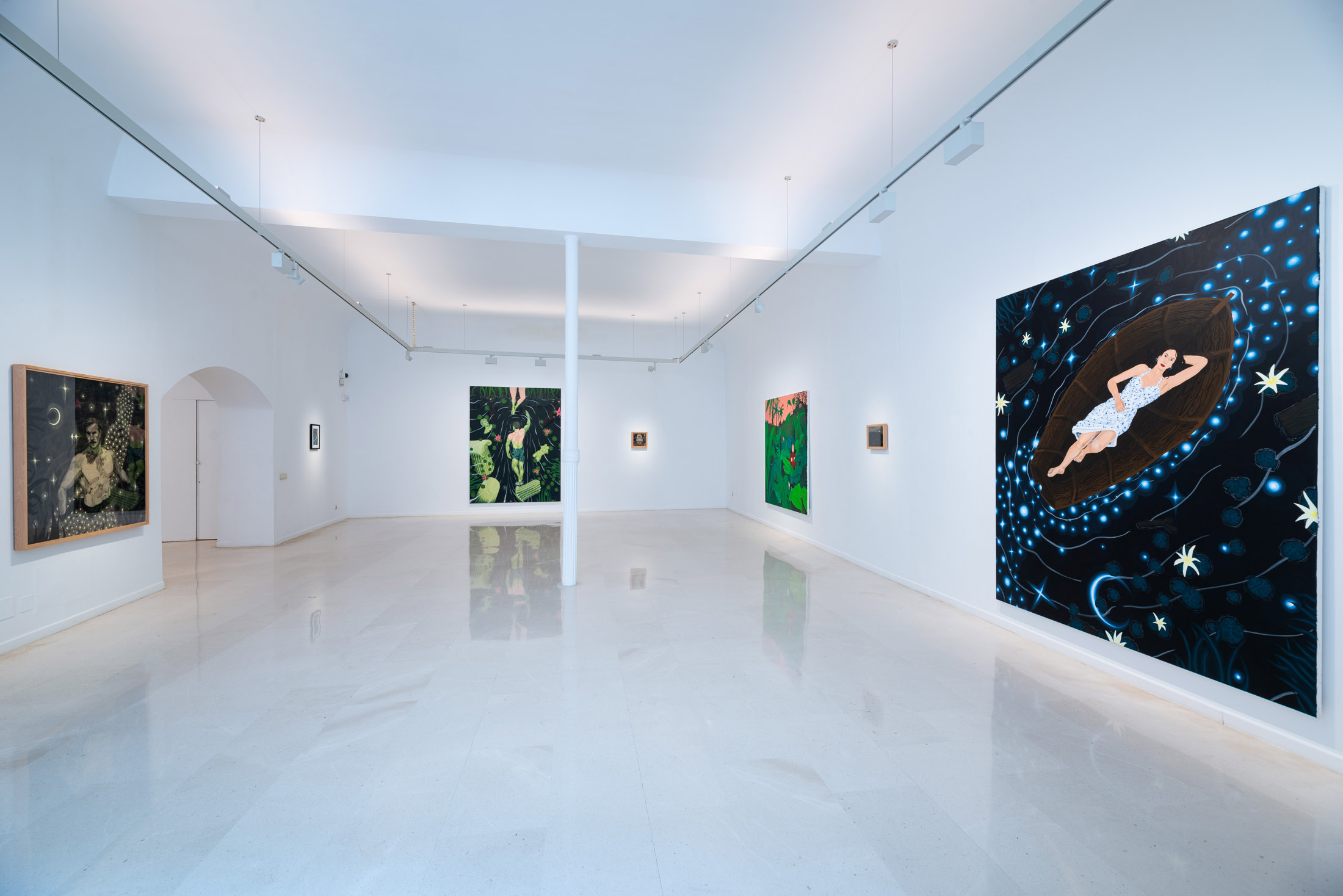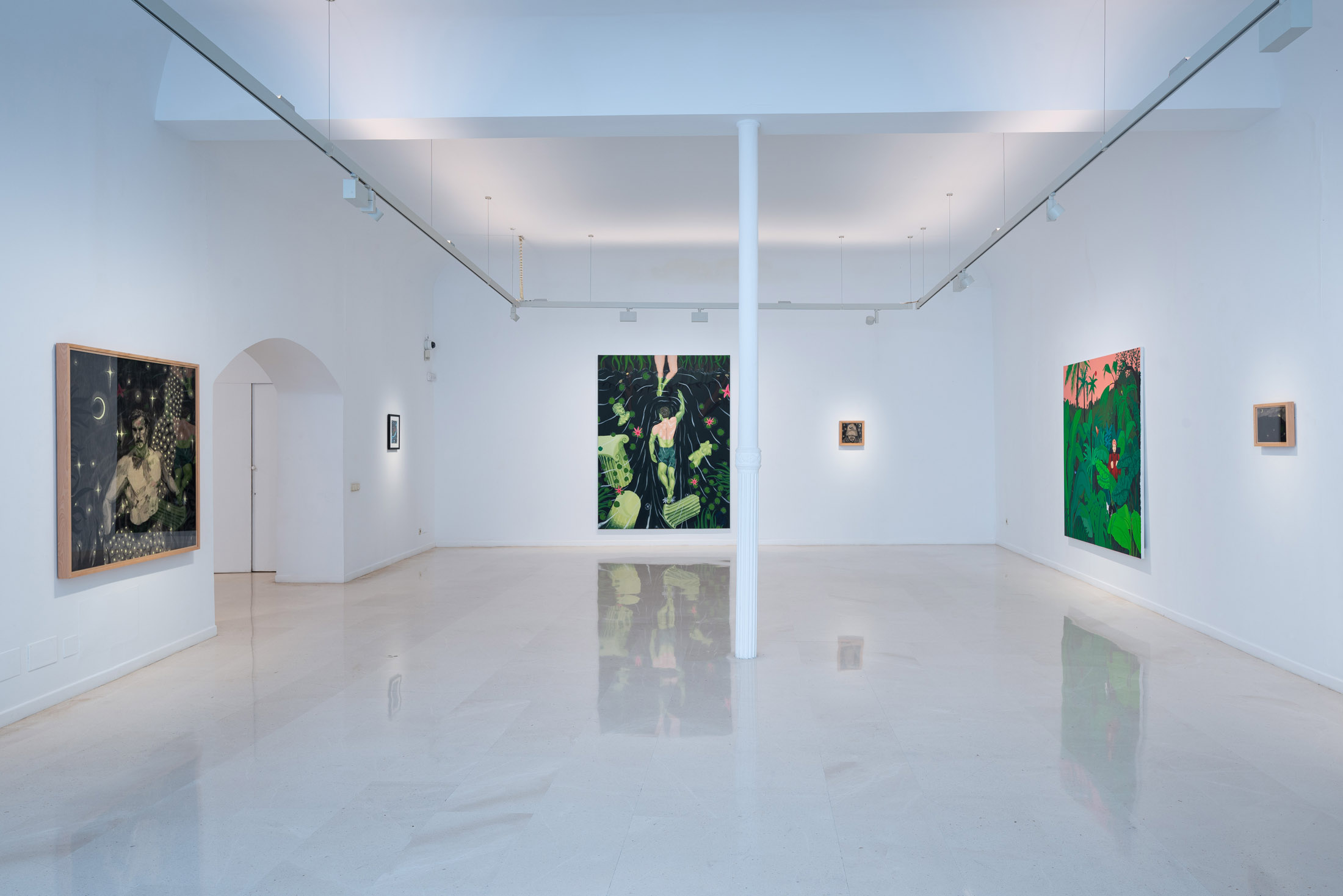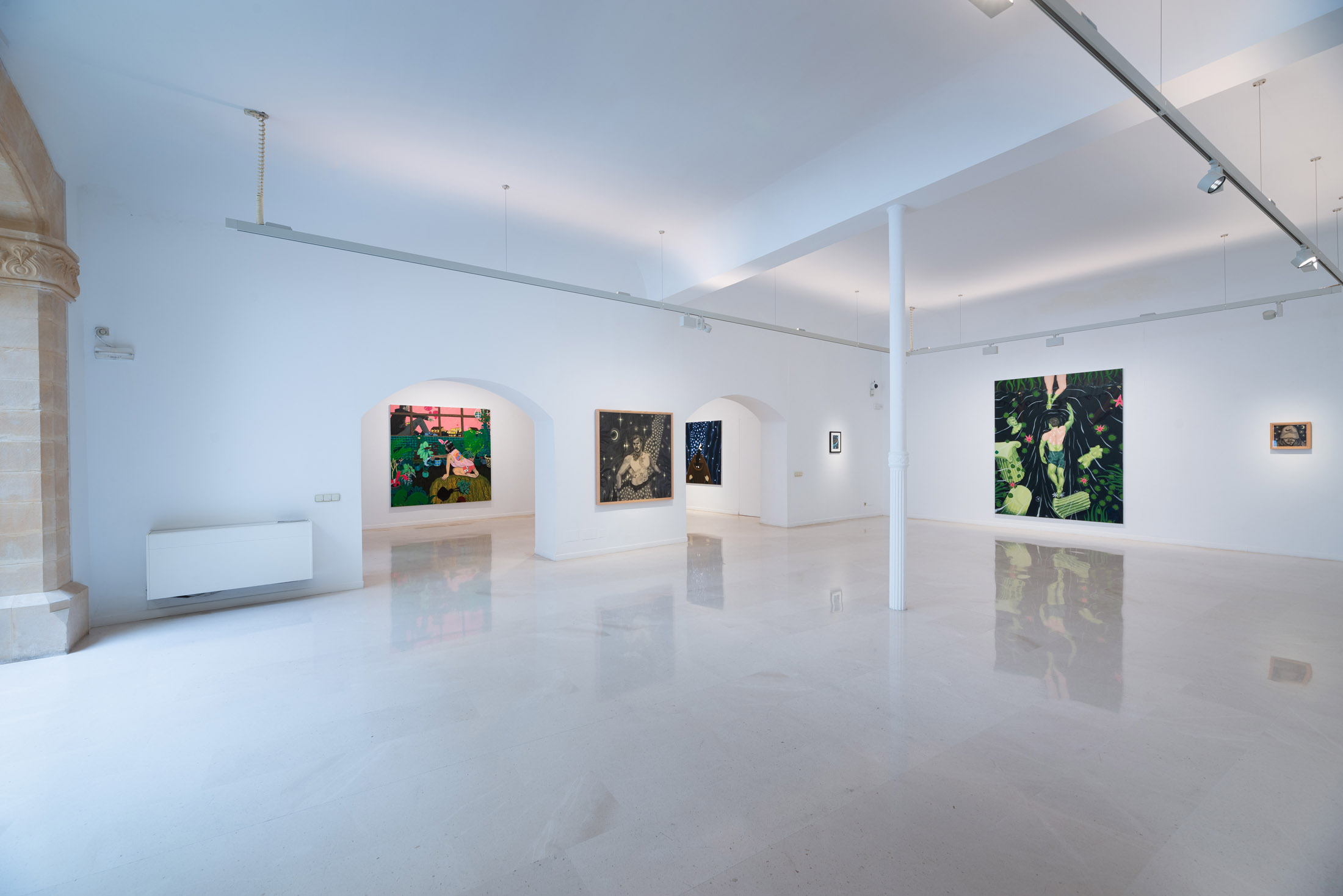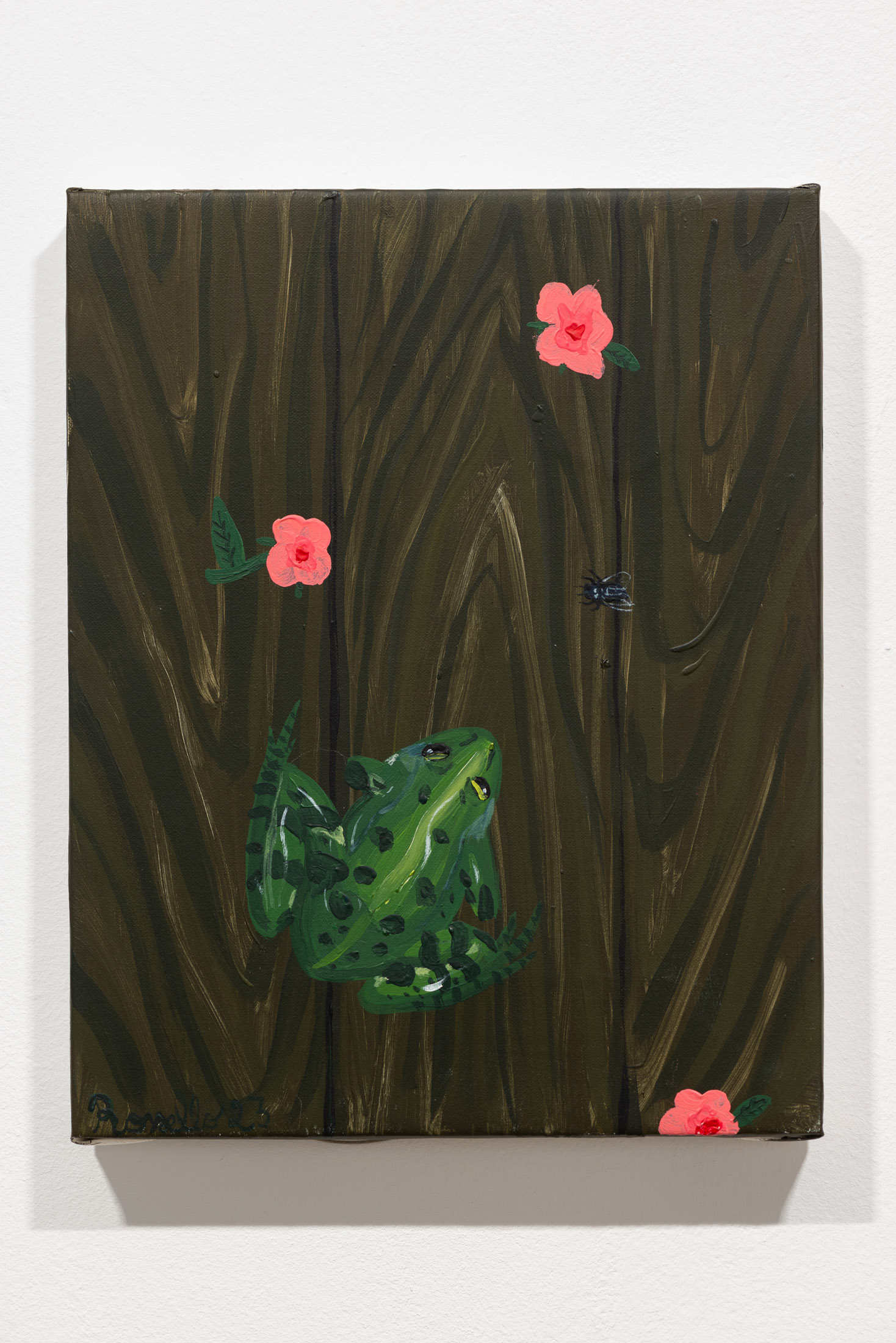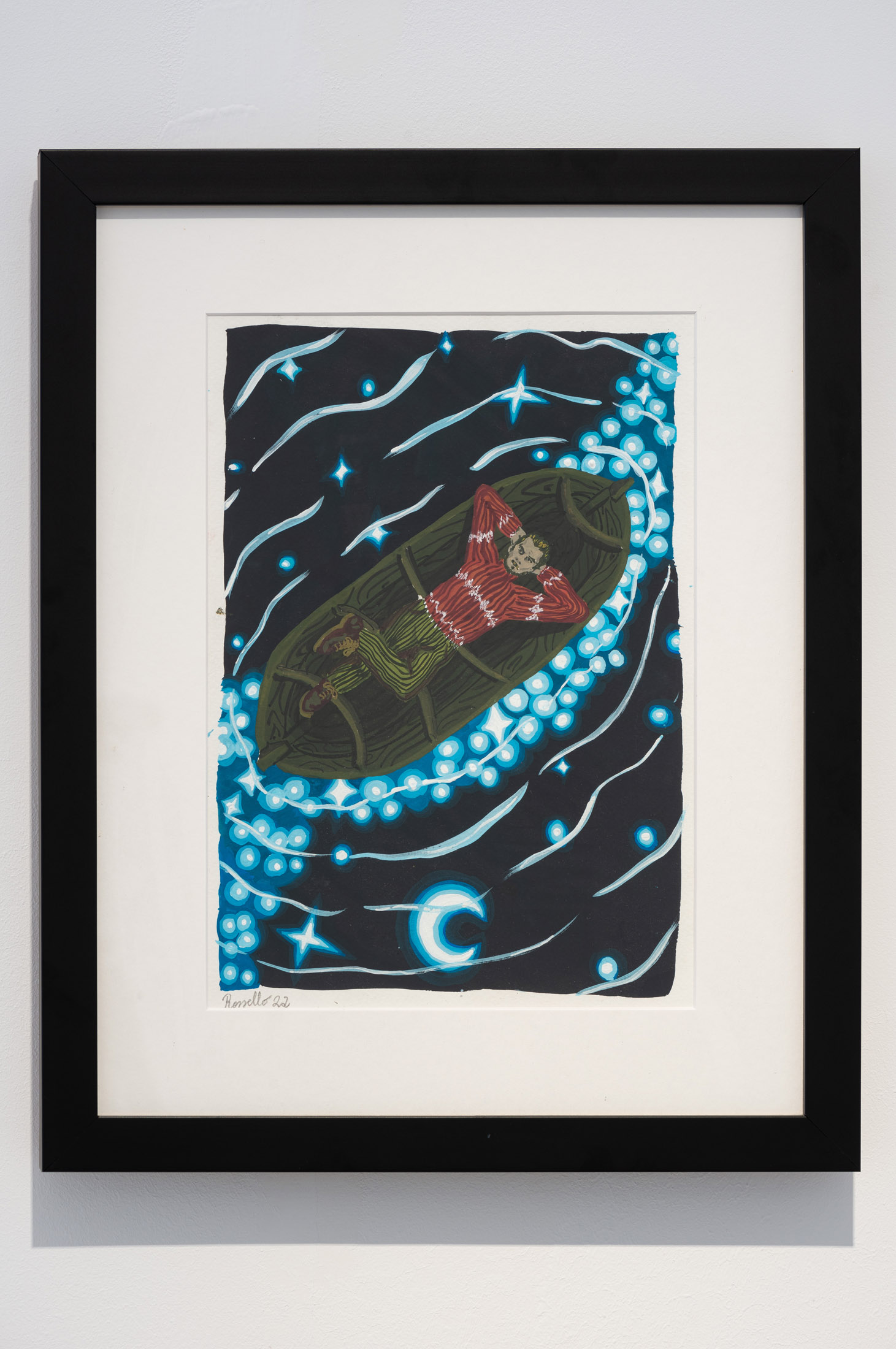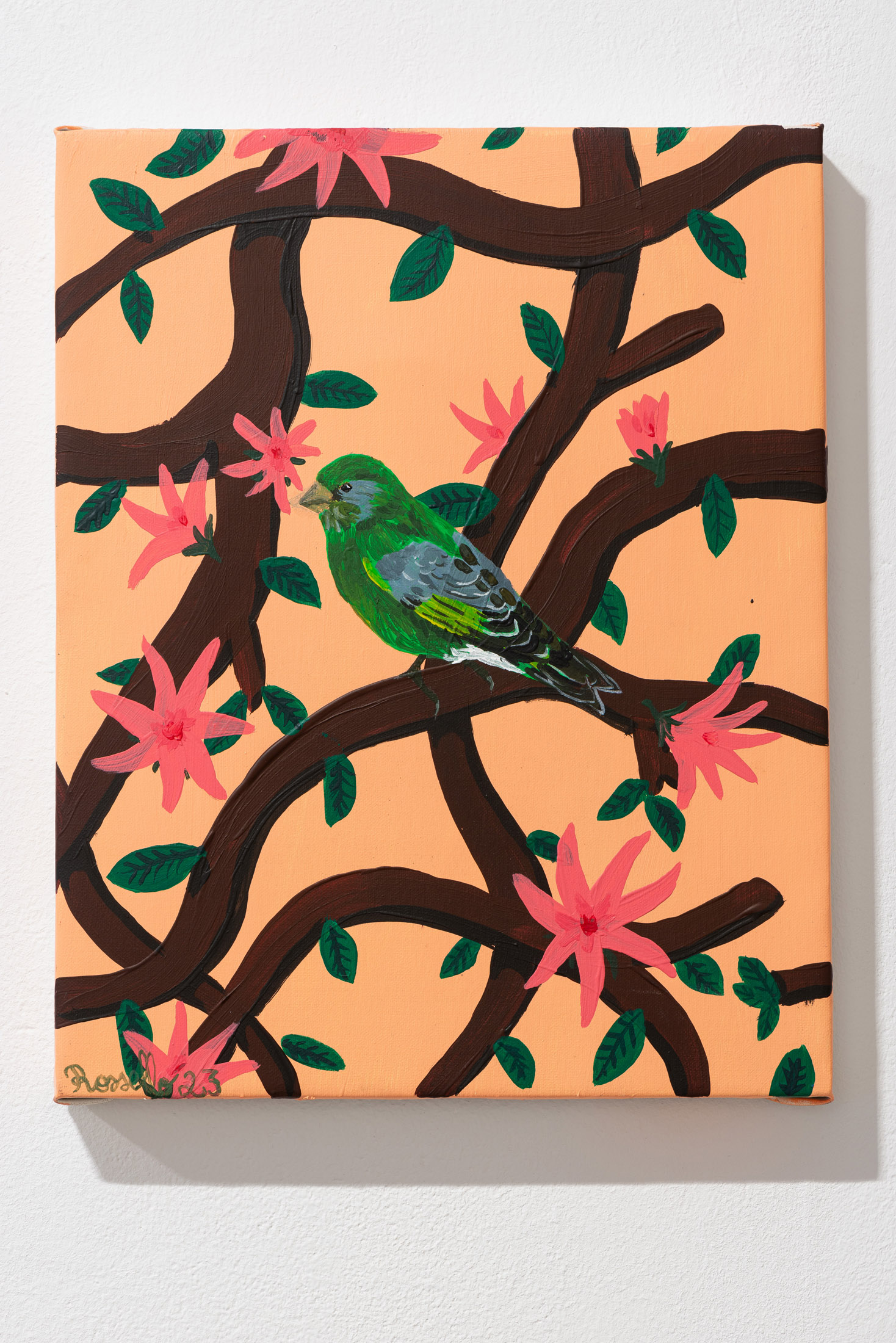Artist: Francesc Rosselló
Exhibition title: Cinco minutos y ya vuelvo
Venue: Galería Pelaires, Mallorca, Spain
Date: June 9 – September 14, 2023
Photography: ©Roberto Ruiz, ©Grimalt de Blanch / all images copyright and courtesy of the artist and Galería Pelaires
It is the first exhibition by Majorcan artist Francesc Rosselló at Galeria Pelaires that includes four big paintings and a couple of black and white drawings.
Francesc Rosselló was born in the Majorcan village of Vilafranca de Bonany 29 years ago. I went there one morning in May to visit his studio. Accompanied by my neighbour and good friend Poli, who often visits her mother there, we drove from a village in the Tramuntana mountain range to the artist’s place of birth. The Rosselló family was among the first to live in Vilafranca, which literally means “village free of taxes”, and which has been strongly linked to agriculture since the Moorish occupation. Today, it is known for its dry-farmed melon cultivation and unusually affordable properties for rent. The drive from the mountains to the so-called Pla de Mallorca took us through bales of straw, and carob, olive and palm trees. The area is also rich in bougainvillea and climbing vines, along with poppies that weave their way through the cracks in the pavement of the villages we drove through.
Francesc’s studio is located in a family home that he has just finished renovating. It overlooks a courtyard dominated by a lemon tree with four thick branches. This is where the artist creates his personal universes, inspired by everyday experiences that he reconstructs in a fiction-inspired way. Cinco minutos y ya vuelvo is the title that groups together the works that we were able to see there that day, and which make up his first solo exhibition at Galeria Pelaires. The title reminds me of those moments in which we try to prolong the gaseous state between sleep and wakefulness, when we still relish the aftertaste of its ambiguous sensations and simultaneously wish to continue to mould its subtle presence; a state in which (according to Balthus) cats live most of their time.
Rosselló studied Fine Arts in Barcelona. His first oil paintings reveal the influence of illustration, comics, manga and cinema, in which storytelling plays a fundamental role. He depicted scenes of youthful experiences in which portraits of people close to him abound and the features of identity in those years (hairstyles, costume jewellery, clothes and tattoos) stand out. They are large works that capture his obsession and emotional attachment to those people and items. In addition to the narrative, a surrealist impulse looms over the formal aspect. There is a clear attraction to changing the matter of things, whether it be turning grass into blades or cigarette smoke into viscera. He has now abandoned oil painting to focus on acrylic on canvas, which he stubbornly tightens himself and where he applies a layer of plastic-looking primer to accentuate blocks in matt colour.
His latest paintings seem to reveal that the artist has slightly distanced himself from the motif depicted, thus expanding his field of vision. Landscapes, whether urban, mental or natural, have now become the central feature; the background and the figure are organically interwoven in the stage of development of the narrative. In this new body of work, he starts adding a bird’s eye view over the scene. This movement is accompanied by the feeling that gives rise to it, where serenity and an apparent temporary suspension replace the agitation of previous years.
The exhibition includes the piece I just want to spend Sundays with you, which functions as a hinge between these two creative stages. On the one hand, it shows a scene taken from the flow of everyday life shared between two individuals, but with moments of weekend pleasure and rest.
Atlántida is the work that the artist recently painted for the latest edition of the film fest of the same name, and which shows from above a man swimming towards the legs of a female companion, in waters with scattered classical architecture ruins, flowering water lilies and vegetable swords. This piece is paired with No veo hacia donde voy, a work that captures a placid scene of his dog Lila floating in a boat rowed by her owner on a sea of pompous reflections.
Me siento como Robinson Crusoe is a kind of self-portrait featuring (again) his canine companion, among the thicket of a Malaysian landscape, to which the artist mentally transports himself to accompany his friends on their journey. A landscape and dreamlike portrait that inevitably remind us of the nature-inspired paintings of Le Douanier Rousseau.
In this exhibition, Rosselló wanted to incorporate two formal experiments that differ slightly from his usual line of work. The first room houses a series of charcoals on canvas, in which the artist continues to explore narratively and formally the mythological idea of man in nature, where the expressive tone is no longer guided by colour but by drawing and volume nuances. There are also some painted bas-reliefs, which function as sculptural fragments that seem to have fallen from inside some of the larger paintings.
An intense dialogue with the history of art can be appreciated, which in turn was captured in the form of a self-portrait and manifesto through his work The narcissit librarian. This is the first work of Rosselló that I had the opportunity to see live at Galeria Horrach Moyà last September. In it, catalogues of painters he admires (Ben Sledsens, Brueguel the Elder, Peter Doig, Hockney, Picasso, Munch, Paula Rego, Klimt, Schiele, Mark Lüpertz, Mantegna) are stacked next to treatises on painting and books on mythology or anatomy. All this is combined with a wide variety of objects and curiosities: stuffed animals, skulls, candles, flowers, encapsulated butterflies, and fragments of anatomical studies.
Cinco minutos y ya vuelvo invites us to enter a personal universe in which we can interrupt the hectic pace of the contemporary world to fall into a dreamy contemplation.
-Cristina Anglada

